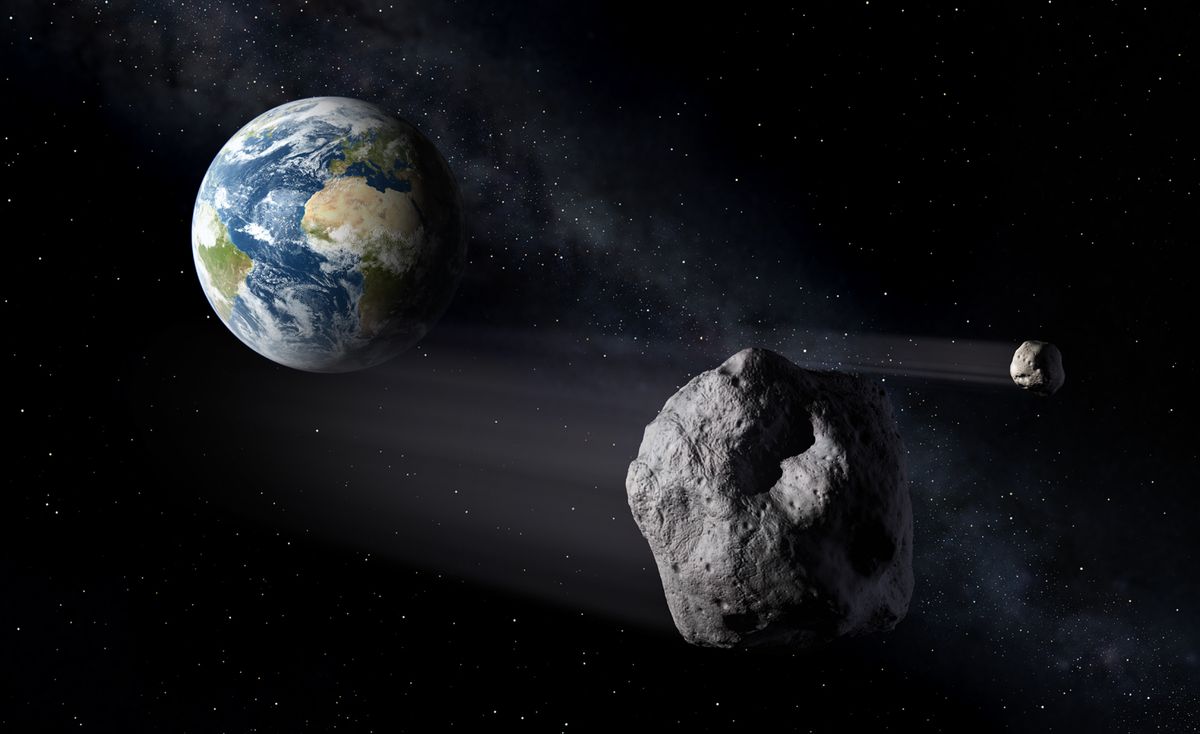
UPDATE: The B612 Foundation has revealed the details of their asteroid-hunting Sentinel Space Telescope to the world. See the full story, plus images and a gallery, here: World's 1st Private Deep-Space Telescope to Hunt Dangerous Asteroids
A team of scientists will reveal plans today (June 28) for the first-ever privately funded deep-space expedition — an unmanned telescope mission that will scan the inner solar system for potentially dangerous asteroids.
At a press conference in San Francisco at 9:00 a.m. local time today (noon EDT; 1600 GMT), officials with the nonprofit B612 Foundation are expected to unveil key details of the group's Sentinel space telescope, which will hunt for asteroids from an orbit around the sun.
"We will create the first comprehensive dynamic map of our inner solar system showing the current and future locations and trajectories of Earth-crossing asteroids, paving the way to protect the Earth from future impacts and opening up the solar system to future exploration," B612 officials said in a media alert last week.
Speakers at the press conference, which will be held at the California Academy of Science's Morrison Planetarium, include:
- Ed Lu, B612 Foundation chairman and CEO; former space shuttle, Soyuz and space station astronaut
- Rusty Schweickart, chairman emeritus; Apollo 9 lunar module pilot
- Scott Hubbard, project architect from Stanford University; former director of NASA Ames Research Center in Moffett Field, Calif.
- Harold Reitsema, mission director; former director of science mission development at Ball Aerospace
Near-Earth asteroids pose a real threat, scientists say. Earth has been pummeled by asteroid strikes repeatedly over its 4.5-billion-year history, and some of these impacts have snuffed out much of the life on our planet. A 6-mile-wide (10-kilometer) space rock, for example, is thought to have wiped out the dinosaurs 65 million years ago. [Photos: Asteroids in Deep Space]
So NASA researchers and other astronomers around the world are scanning the skies for big asteroids that could come uncomfortably close to us someday. They've already found about 95 percent of the biggest asteroids thought to be out there — space rocks 0.6 miles (1 km) wide or larger, which could cause damage on a global scale if they struck Earth.
Sign up for the Live Science daily newsletter now
Get the world’s most fascinating discoveries delivered straight to your inbox.
However, asteroids as small as 330 feet (100 meters) could destroy an area the size of a state, and many thousands of these objects are believed to be zooming through space undetected. Researchers say that launching a dedicated asteroid-hunting space telescope to an orbit inside that of Earth would be a great help in finding and mapping these potentially hazardous space rocks.
A more complete asteroid survey could also help spur the exploration and exploitation of space. A new breed of space entrepreneur — including the people behind the billionaire-backed firm Planetary Resources — plans to mine asteroids for resources such as precious metals and water. The first step for such efforts involves identifying suitable targets.
This story was provided by SPACE.com, a sister site to LiveScience. Follow SPACE.com senior writer Mike Wall on Twitter @michaeldwall or SPACE.com @Spacedotcom. We're also on Facebook and Google+.













